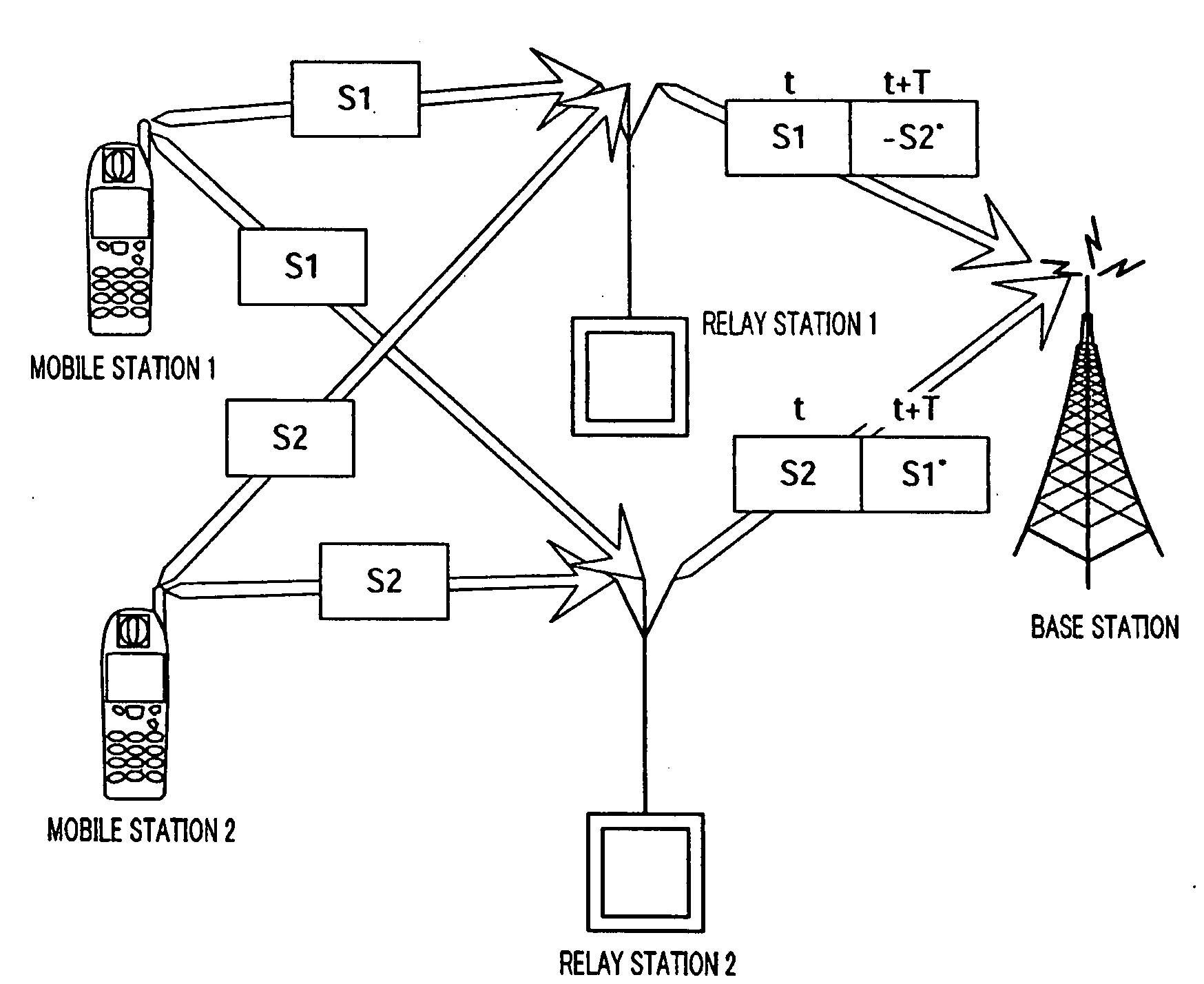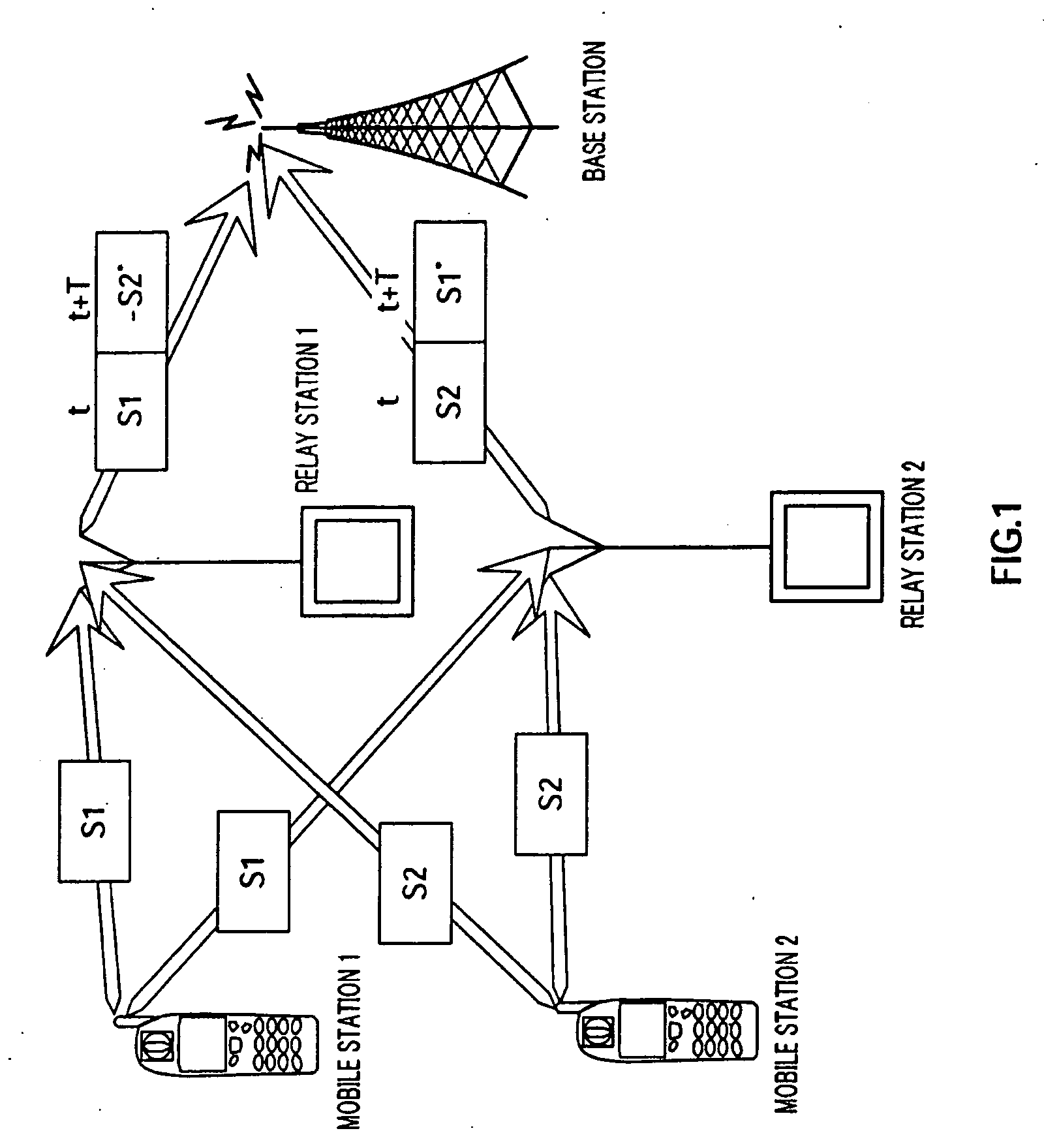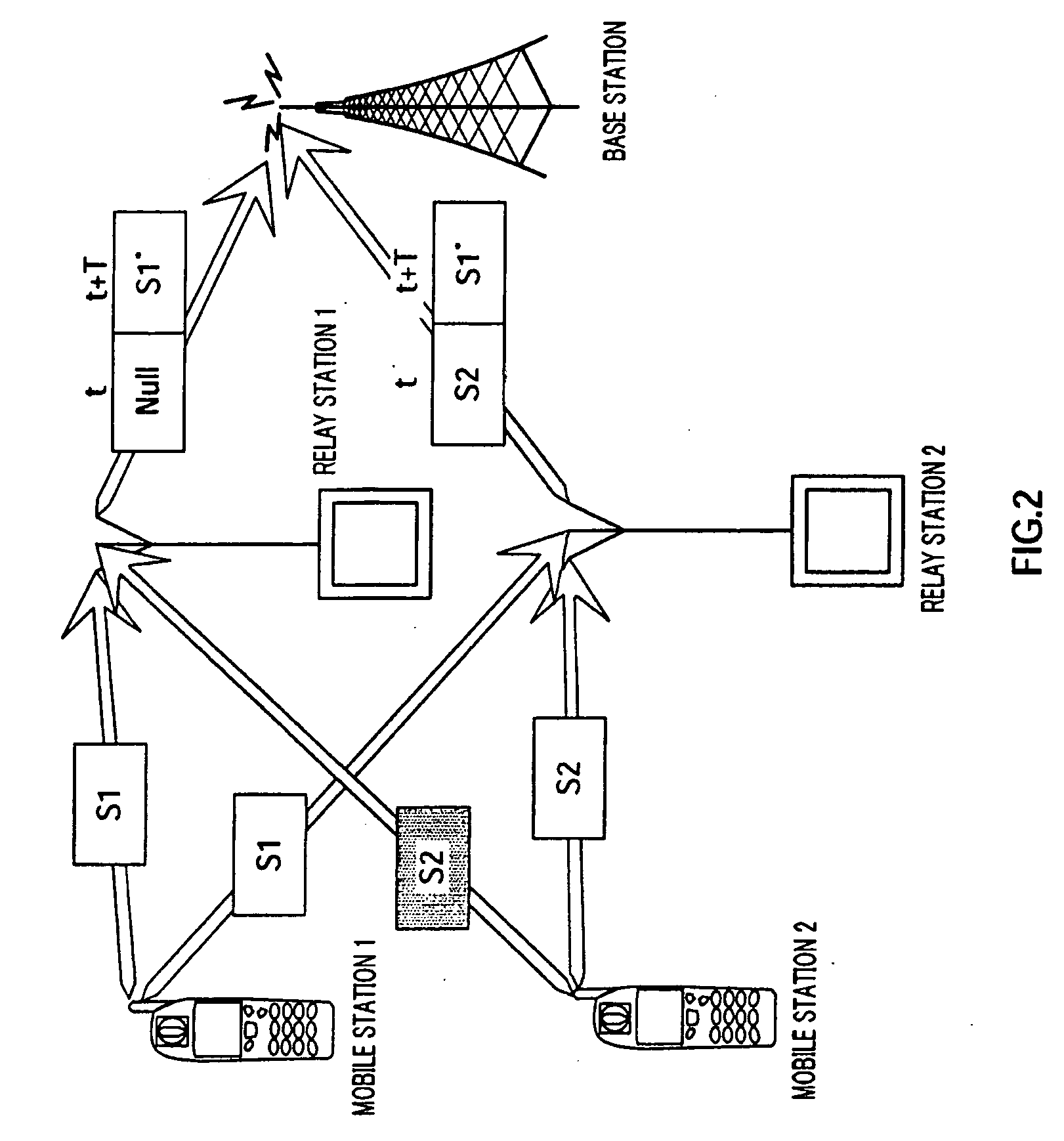Radio communication apparatus and radio communication method
a radio communication and radio communication technology, applied in the field of radio communication apparatus and radio communication method, can solve the problem of increasing distance and increasing the effect of transmission distan
- Summary
- Abstract
- Description
- Claims
- Application Information
AI Technical Summary
Benefits of technology
Problems solved by technology
Method used
Image
Examples
embodiment 1
[0037]According to the present embodiment, when there are no errors in S1 and S2, relay station 1 encodes S1 and S2 by encoding generating the signal sequence (the first row of matrix A) that is different from the signal sequence (the second row of matrix A) used in relay station 2. On the other hand, when there is an error in either S1 or S2, relay station 1 encodes only the signal without an error by encoding generating the signal sequence (the second row of matrix A). Moreover, relay station 1 cancels relay transmission of a signal with an error.
[0038]When there are no errors in S1 and S2, relay station 1 encodes S1 and S2 and generates the first row of matrix A as explained above, and relays S1 at t and −S2* at t+T to the base station.
[0039]On the other hand, as shown in FIG. 2, when there is no error in S1 and there is an error in S2, relay station 1 cancels relay transmission of S2 and encodes S1 alone and generates the second row of matrix A. Accordingly, relay station 1 does...
embodiment 2
[0074]The present embodiment is different from Embodiment 1 in that, when there is an error in either S1 or S2, relay station 1 receives from relay station 2 a signal relayed by relay station 2 and prepares for a retransmission request from the base station. By this means, relay station 1 can receive the same signal as a signal not transmitted by relay station 1 due to errors, so that relay station 1 can relay a signal received from relay station 2 to the base station when the base station requests a retransmission.
[0075]For example, as shown in FIG. 8, when there is no error in S1 and there is an error in S2, relay station 1 receives S2 that relay station 2 relays to the base station at time t when relay station 1 does not relay. Moreover, when there is no error in S2 received from relay station 2, relay station 1 stores S2 in a buffer. Then, relay station 1 transmits S2 stored in the buffer to the base station upon receiving are transmission request from the base station. The rest...
embodiment 3
[0085]The present embodiment is different from Embodiment 1 in assigning different priorities to relay stations 1 and 2, so that, when there is no error in the signal scheduled to be transmitted at time t and there is an error in the signal scheduled to be transmitted at time t+T, the relay station of the lower priority checks whether or not the relay station of the higher priority performs relay transmission at time t and then performs relay transmission. By this means, when there are errors in signals from different mobile stations in relay stations 1 and 2, it is possible to prevent relay stations 1 and 2 from transmitting different signals at t+T.
[0086]For example, if the priority of relay station 1 is high and the priority of relay station 2 is low, as shown in FIG. 11, when there is no error in S2 scheduled to be transmitted at time t and there is an error in S1 scheduled to be transmitted at time t+T, relay station 2 receives the signal from relay station 1 at time t and chec...
PUM
 Login to View More
Login to View More Abstract
Description
Claims
Application Information
 Login to View More
Login to View More - R&D
- Intellectual Property
- Life Sciences
- Materials
- Tech Scout
- Unparalleled Data Quality
- Higher Quality Content
- 60% Fewer Hallucinations
Browse by: Latest US Patents, China's latest patents, Technical Efficacy Thesaurus, Application Domain, Technology Topic, Popular Technical Reports.
© 2025 PatSnap. All rights reserved.Legal|Privacy policy|Modern Slavery Act Transparency Statement|Sitemap|About US| Contact US: help@patsnap.com



